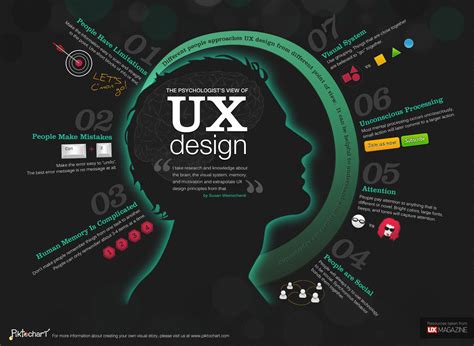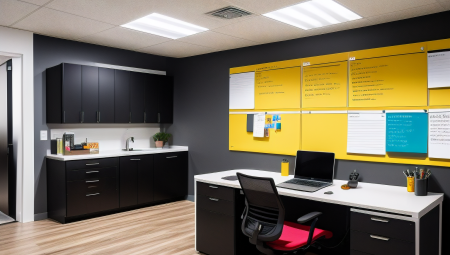In today’s digital age, the demand for user experience (UX) designers has skyrocketed as companies increasingly prioritize creating seamless digital experiences for their users. If you have a keen eye for design and a passion for understanding user behaviors, a career as a UX designer could be the perfect fit for you. In this blog post, we will dive into the world of UX design, exploring the fundamental role of a UX designer, the essential skills needed for a successful career, and the various techniques and principles that make up the foundation of creating exceptional digital experiences. From mastering user research and analysis to optimizing user interfaces and conducting usability testing, the journey to becoming a proficient UX designer is both challenging and rewarding. We will also discuss the importance of staying updated on emerging trends and building a strong portfolio to showcase your expertise in this rapidly growing field. Whether you’re a seasoned designer looking to transition into UX or a newcomer to the industry, this blog post will provide valuable insights and guidance to help you pave your way towards a successful career in UX design.
Table of Contents
Understanding the role of a UX designer
As a UX designer, your primary role is to design digital products and experiences that are user-centered and provide a seamless and enjoyable experience for the end user. This involves understanding the needs and behaviors of the target audience and using that insight to inform design decisions.
One of the key responsibilities of a UX designer is to conduct user research to gather insights into user behavior, preferences, and pain points. By understanding the needs of the users, UX designers can create designs that are intuitive, user-friendly, and meet the needs of the target audience.
In addition to user research, UX designers are also involved in creating wireframes and prototypes to visualize and test the design concepts. This requires a deep understanding of interaction design principles and the ability to create designs that are both aesthetically pleasing and functional.
Furthermore, UX designers collaborate with cross-functional teams, including developers, product managers, and other designers, to ensure that the final product meets the needs of the users and aligns with the overall business goals.
Acquiring skills for a successful UX design career
Acquiring skills for a successful UX design career is crucial in the competitive job market. As demand for user experience designers continues to rise, it’s essential to develop a strong skill set to stand out from the crowd. One of the most important skills to acquire is user research, which involves understanding the needs and behaviors of the target audience. This skill is vital in creating designs that effectively meet user needs and improve overall satisfaction.
Another essential skill for a successful UX design career is information architecture. This involves organizing and structuring content in a clear and intuitive way, making it easier for users to navigate and find what they need. Having a solid grasp of information architecture principles will greatly enhance the user experience and make designs more effective.
Visual design is also a critical skill for UX designers. This includes understanding typography, color theory, and layout principles to create visually appealing and functional designs. A strong visual design skill set will help in communicating ideas effectively and creating engaging experiences for users.
In addition to these technical skills, it’s important for UX designers to develop soft skills such as communication, problem-solving, and collaboration. These skills are essential in working effectively with cross-functional teams, understanding client needs, and delivering successful design solutions.
Mastering user research and analysis techniques
Mastering user research and analysis techniques is essential for any UX designer looking to create impactful and user-centric designs. By understanding the needs, behaviors, and preferences of the target users, designers can develop products that truly resonate with their audience.
Acquiring skills such as conducting interviews, surveys, and usability tests, as well as analyzing data and creating user personas, are crucial for mastering user research and analysis techniques. These skills enable designers to gain valuable insights into the user experience, identify pain points, and uncover opportunities for improvement.
Additionally, implementing best practices for data interpretation and analysis allows designers to make informed design decisions that are backed by evidence and user insights. By leveraging tools and methods such as user flow mapping, journey mapping, and A/B testing, designers can gain a deeper understanding of user behavior and preferences.
Overall, mastering user research and analysis techniques empowers UX designers to create designs that are not only visually appealing but also intuitive, efficient, and tailored to the needs of the target audience.
Creating effective wireframes and prototypes
Creating effective wireframes and prototypes is an essential step in the UX design process. Wireframes are like the blueprints of a building, laying out the structure and functionality of a website or app. They provide a visual representation of the page layout, navigation, and overall user interface. Prototypes, on the other hand, are interactive models that allow users to experience the interface and provide feedback before the final product is developed.
When creating wireframes, it’s important to focus on clarity and simplicity. The goal is to communicate the basic layout and functionality without getting caught up in design details. Using tools such as Sketch, Adobe XD, or Figma can help streamline the wireframing process and allow for easy iteration. It’s also important to involve stakeholders and gather feedback early in the process to ensure the wireframes accurately reflect the intended user experience.
Prototyping takes the wireframes to the next level by adding interactivity and usability testing. With tools like InVision or Axure, designers can develop clickable prototypes that simulate user interactions and workflows. This allows for valuable user feedback and can help identify any usability issues before moving into the development phase.
In conclusion, creating effective wireframes and prototypes is a crucial step in the UX design process. It sets the foundation for the user interface and allows for early testing and refinement. By focusing on clarity, simplicity, and interactivity, designers can create wireframes and prototypes that effectively communicate the intended user experience and lead to successful final products.
Implementing interaction design principles
When it comes to interaction design, it is essential to understand the principles that govern the way users engage with digital products. This involves creating interfaces that are intuitive, efficient, and enjoyable to use. By implementing interaction design principles, designers can ensure that users have a seamless experience when navigating through websites, mobile apps, or other digital platforms.
One of the key principles of interaction design is to focus on usability. This means designing interfaces that are easy to understand and navigate, allowing users to accomplish tasks with minimal effort. By conducting user research and analysis, designers can gain insights into the needs and preferences of their target audience, which can inform the design process and lead to more user-friendly interactions.
In addition to usability, interaction design also involves creating interfaces that are visually appealing and engaging. This can be achieved through the use of visual hierarchy, effective use of color and typography, and motion design. These elements can enhance the overall user experience, making the interface more interactive and enjoyable to use.
Furthermore, implementing interaction design principles also requires considering the context in which users will interact with the digital product. This involves understanding the environment in which the product will be used, as well as the user’s goals and expectations. By designing interfaces that are responsive and adaptive to different contexts, designers can create a more personalized and relevant experience for users.
Optimizing user experience through UI design
When it comes to optimizing user experience through UI design, it is crucial to pay attention to every detail of the user interface. The user interface is the point of interaction between the user and the digital product, so it plays a significant role in shaping the overall user experience.
One of the key aspects of optimizing user experience through UI design is to ensure that the interface is intuitive and easy to navigate. This involves carefully considering the placement of elements, such as buttons, menus, and forms, to make it effortless for users to interact with the product. Additionally, using clear and concise language in the UI can enhance the overall user experience, as it helps users understand the purpose and functionality of different elements.
Another important factor in optimizing user experience through UI design is to focus on visual appeal. A visually appealing interface can capture the attention of users and create a positive first impression. This can be achieved through the use of color schemes, typography, and imagery that align with the brand’s identity and create a cohesive and engaging user experience.
Lastly, optimizing user experience through UI design also involves ensuring that the interface is responsive and accessible across different devices and screen sizes. This means testing the UI design on various platforms to guarantee a seamless experience for all users, regardless of the device they are using. By prioritizing these factors, UI designers can effectively optimize the user experience and contribute to the overall success of a digital product.
Conducting usability testing to enhance designs
Usability testing is a crucial step in the design process that helps ensure the effectiveness and efficiency of a product. By conducting usability testing, designers can identify potential issues and gather valuable feedback from real users, allowing them to make informed decisions about design improvements.
One of the key benefits of usability testing is that it provides insights into how users interact with a product. By observing user behavior and gathering feedback, designers can gain a better understanding of user needs, preferences, and pain points, which can inform future design decisions.
Another important aspect of conducting usability testing is that it helps uncover any usability issues or obstacles that may hinder the overall user experience. By identifying and addressing these issues early on, designers can make necessary adjustments to enhance the usability and effectiveness of the product.
Overall, conducting usability testing is an essential practice for designers looking to create user-centric designs that prioritize the needs and preferences of the end-users. By leveraging feedback and insights gathered from usability testing, designers can make informed design decisions that ultimately lead to a more intuitive and satisfying user experience.
Collaborating with cross-functional teams
Collaborating with cross-functional teams is a crucial aspect of UX design. It involves working with professionals from various departments, such as developers, marketers, product managers, and more, to ensure that the design meets the overall business goals and user needs. Effective collaboration is essential for creating a seamless and cohesive user experience.
When working with cross-functional teams, it’s important to communicate clearly and effectively. This involves sharing ideas, feedback, and updates with team members, and being open to incorporating their input into the design process. By working collaboratively, you can leverage the diverse expertise of the team to create more innovative and effective solutions.
Another key aspect of collaborating with cross-functional teams is fostering a culture of collaboration and teamwork. This involves building strong relationships with team members, fostering a sense of trust and respect, and creating an environment where everyone feels valued and heard. When team members feel respected and empowered, they are more likely to contribute their best work to the design process.
Overall, collaborating with cross-functional teams is essential for creating successful UX designs. By working together, leveraging diverse expertise, and fostering a culture of collaboration, you can create more impactful and effective user experiences.
Staying updated on emerging UX design trends
As a UX designer, it is crucial to stay updated on emerging trends in the field in order to remain competitive in the job market and to continue delivering high-quality user experiences. Keeping up with the latest developments allows you to integrate new techniques and tools into your design process, ensuring that your work remains relevant and effective.
One way to stay updated on emerging UX design trends is by regularly reading industry publications and blogs. Platforms such as Medium, Smashing Magazine, and UX Design Magazine often feature articles and insights from leading professionals in the field, providing valuable information on upcoming trends, best practices, and case studies.
Attending industry events and conferences is another effective way to stay informed about emerging UX design trends. These events offer opportunities to network with fellow designers, learn from industry experts through keynote presentations and workshops, and gain firsthand exposure to the latest tools and technologies shaping the UX design landscape.
Furthermore, joining professional organizations such as the Interaction Design Foundation or the User Experience Professionals Association can provide access to resources, webinars, and online courses that keep you abreast of emerging trends and help you develop new skills.
Building a portfolio to showcase your expertise
When it comes to establishing yourself as a successful UX designer, building a strong portfolio is essential. Your portfolio serves as a representation of your skills, expertise, and experience to potential employers or clients.
It’s important to showcase a diverse range of projects in your portfolio, including those that demonstrate your ability to solve various design challenges. This could include projects involving user research, wireframing, prototyping, interaction design, UI design, and usability testing.
Highlighting the design process and the impact of your work is also crucial. Explain the problem you were trying to solve, the approach you took, and the outcomes achieved. Including before-and-after comparisons or user testimonials can provide powerful evidence of your skills.
Additionally, incorporating personal projects or case studies can help to demonstrate your passion for UX design and your ability to think outside the box. This can include redesigning popular websites or apps, or creating new concepts to address user needs.





